Part I of a Cognitive Science Series
Imagine this: a painting so iconic, so revered, that people cross oceans just to catch a glimpse of it—only to realize, they may not be seeing what the artist originally intended. That’s the Mona Lisa today. What if I told you that the masterpiece hanging in the Louvre isn’t quite the one Da Vinci painted?
Welcome to the world of cognitive science and art. Where layers of history—both literal and figurative—can change the way we see one of the most famous paintings of all time.
So, what happened? Over centuries, the Mona Lisa has undergone restoration after restoration, and all that scrubbing and varnishing has chipped away at its original state. The outer layer is no longer what Da Vinci painted; instead, it’s a patchwork of old varnish, cracks, and restoration techniques. But what’s hidden beneath? That’s where things get interesting.
Welcome to the world of cognitive science and art. Where layers of history—both literal and figurative—can change the way we see one of the most famous paintings of all time.
So, what happened? Over centuries, the Mona Lisa has undergone restoration after restoration, and all that scrubbing and varnishing has chipped away at its original state. The outer layer is no longer what Da Vinci painted; instead, it’s a patchwork of old varnish, cracks, and restoration techniques. But what’s hidden beneath? That’s where things get interesting.
Who Can We Blame for This?
It all started with Jean-Marie Hooghstoel, the man behind the first major restoration of the Mona Lisa back in 1809. He did such a thorough job of cleaning the painting that he altered the way we see it today. Sure, he may have made the painting clearer for 19th-century viewers, but in doing so, he added a layer of varnish that would have unintended consequences.The crackle—those delicate spiderweb cracks that form in aging paintings—took root in the varnish layer and obscured Da Vinci’s original work. The wood panel the painting was created on expanded and contracted over time, causing even more damage.
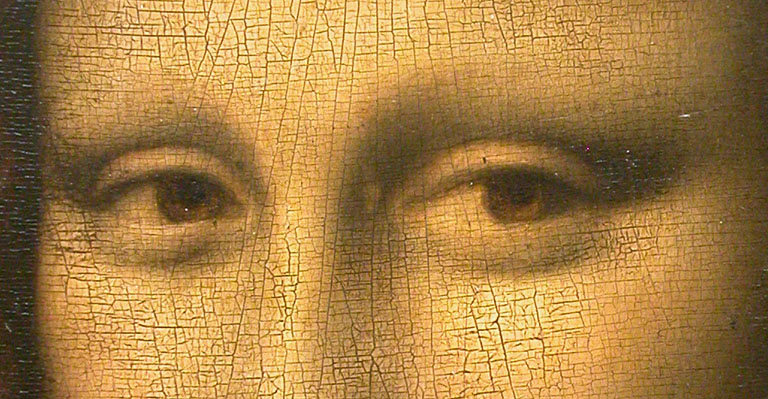
Mona Lisa (1517) with Craquelure*
But wait, there’s more! Thanks to a discovery known as the “Early Mona Lisa” or the Isleworth Mona Lisa, we’ve learned even more. This earlier version shows a younger Lisa del Giocondo (yes, she was a real woman) and is painted on canvas, not wood like the version in the Louvre.

Isleworth Mona Lisa
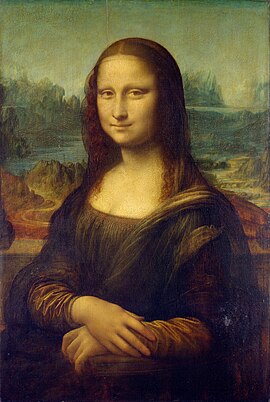
Mona Lisa (1517)
Wait, Are There Missing Parts?
Yes, and you’ll be surprised to learn which ones. The current Mona Lisa doesn’t even have all of her facial features. Specifically, she’s missing the caruncula lacrimalis and the nictating membrane—two small parts of the human eye that we usually don’t notice.Why does this matter? Well, even though these are small, seemingly insignificant features, they still play a role in how we perceive human faces. Da Vinci, known for his attention to detail, would have included them intentionally. Their absence raises questions about how much we’ve lost to time and restoration.
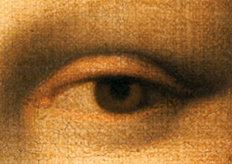
Eye cropping from Isleworth Mona Lisa
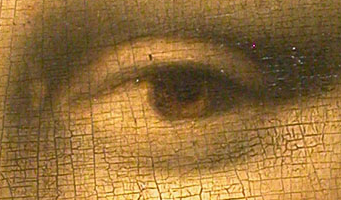
Eye cropping from Mona Lisa (1517)
The Power of Perception
The missing eye features highlight a psychological effect known as Gestalt psychology—the idea that our brains focus on the whole picture before noticing the details. Think of the famous Rubin’s Vase: Do you see a vase, or two faces? The same concept applies to the Mona Lisa. Our brains might be drawn to her overall face, while missing the smaller, crucial details.
Rubin’s vase
Even modern psychology suggests that the little details of a face, like these missing eye parts, could subtly influence how we perceive Mona Lisa’s famous smile or her gaze. Small as they may be, these pieces might actually shape our understanding of the painting in ways we’re not consciously aware of.
Thanks to Cotte’s work, we now know just how much time, crackle, and restoration have altered the original masterpiece.
Science to the Rescue
Now here’s where things get really cool. Pascal Cotte, a French engineer and art expert, used advanced multispectral imaging to uncover what’s really hidden beneath the surface of the Mona Lisa. Using his technology, Cotte scanned the painting with 13 different wavelengths of light, from ultraviolet to infrared. The result? He confirmed that these subtle eye features really are missing.Thanks to Cotte’s work, we now know just how much time, crackle, and restoration have altered the original masterpiece.
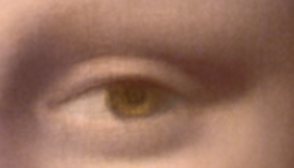
Cropping from a rendered image of Mona Lisa
Courtesy of (c) Pascal Cotte
The Mona Lisa Effect
Here’s a fun fact: Did you know that the Mona Lisa was once thought to have an optical illusion where her eyes seemed to follow you around the room? Known as the Mona Lisa Effect, this gaze-tracking phenomenon was debunked by modern studies, which showed that the painting’s gaze is slightly off-center. But what if this effect disappeared along with the missing parts of the Mona Lisa’s face? If these small details were once present, they might have been key to creating that optical illusion, one that we no longer experience.More Than Just a Painting
So, is the Mona Lisa just a piece of art, or is it something more? Some argue that Leonardo da Vinci wasn’t just painting a portrait—he was conducting a scientific study on how we perceive faces. Da Vinci was obsessed with human anatomy and cognition, dissecting dozens of human faces to understand how they worked.** The Mona Lisa, then, could be considered a centuries-old experiment in cognitive science, as much as it is a piece of art.Today, even as cracks and time take their toll, the painting continues to inspire, fascinate, and challenge the way we see the world—and ourselves. Despite everything it has been through, the Mona Lisa endures, proving that even when art is “destroyed,” its legacy lives on.
This piece has been revised to invite a modern audience into a centuries-old conversation about art, science, and perception. Whether you’re an art enthusiast or just someone fascinated by human behavior, this story is for you.
Notes:
*Source of all images is Wikipedia.org except for the image courtesy of Pascal Cotte
**Facts about the life of Da Vinci in this blog post are taken from Walter Isaacson’s Leonardo Da Vinci (2017).
Be sure to check out the previous installments of this series.
Be sure to check out this experiential web app, leveraging the principles within this blog post and beyond!
